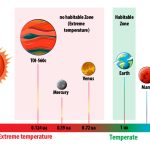
Project Gallery 2023
Secondary students from across Europe became exoplanet detectives with ESA and used Cheops satellite data to uncover the mysteries of two exoplanet targets: KELT-3b and TOI-560c.
Explore the projects below.
Kepler4
Marcelino Champagnat Armenia – Quindío Colombia 14 years old, 16 years old, 17 years old, 15 years old, 18 years old 20 / 9
Youtube Video Link:
https://www.youtube.com/watch?v=bWmQY_a3oeE&t=61s
TOI-560c
TOI-560c project description:
In this article, the activity of ESA hacking an exoplanet was documented, which involved analyzing real data from the exoplanet TOI-560c captured by the CHEOPS satellite for subsequent characterization. This was done by estimating its size, orbital period, density, and temperature. Additionally, various cross-curricular activities were developed for teaching astronomy, such as astrobiology, which involved studying tardigrades in extreme conditions. The study of sunspots was conducted using the Celestron Omni XLT 150 telescope and a solar filter. A planetary system was simulated and constructed using a Creality Cr200b 3D printer, and the study of solar energy was also included. Twenty participants between the ages of 14 and 18 were selected, and on the day of the activity, they were divided into groups of three students who documented their findings in a guide or logbook. Through the activities conducted, an increase in motivation towards astronomy and mathematics was observed, as well as an improvement in teamwork skills, hypothesis formulation, drawing conclusions, and proposing models. It was also concluded that TOI-560c does not offer habitable conditions for known forms of life due to its high temperatures, as its average orbit around the star is 0.1242 AU. This would lead to significant changes in the chemical composition of biomolecules, such as denaturation, and in the planet’s atmosphere.
Keywords: Education, astronomy, exoplanets, hack an exoplanet, european space agency ESA
TOI-560c Results and Analysis
Dear ESA. We strive to make an article with graphics and editing that is difficult to write here.
So we prefer to send it attached below. Thank you so much!
TOI-560c Conclusions
Allesfitter software and data from the CHEOPS satellite were used. It was possible to reproduce the physical information reported in the specialized literature for the exoplanet TOI-560c. The exoplanet is a mini-Neptune with high temperatures and a mass of 9.70M⨁. The star TOI-560 is a K-type spectral star, also known as HD 73583, located in the Hydra constellation at a distance of approximately 103 light-years from Earth. It has a radius of 0.65R⨀ and appears reddish-orange in color.
In this study, the exoplanet TOI-560c was characterized, and it was found that due to its proximity to the host star with a mean orbital distance of 0.124 au and a planet radius of 2.45R⨁, it is unlikely to host life. This would result in high levels of radiation due to the high temperatures near the melting point of tin, which would have significant consequences for life as we know it. First, biomolecules such as proteins and amino acids would denature at high temperatures, losing their structure and function. Second, the absence of liquid water would hinder the existence of life as we know it, as water would be in a gaseous state at such temperatures. Third, the scarcity of stable organic compounds would make it difficult for the formation and preservation of complex biological molecules, as high temperatures would cause the decomposition of these compounds. Lastly, the intense radiation exposure would be harmful to living organisms, including humans.
The density of TOI-560c is 3.65 gcm-³, suggesting that it is likely composed of silicates. Specifically, it could contain silicate minerals rich in iron, such as olivine or pyroxene, which have densities ranging from 3.2 to 4.5 gcm-³. It has also been reported to have an atmosphere rich in hydrogen, comprising at least 1% of its mass.
Finally, there is always the remote possibility of the existence of extremophilic life forms with unique and unknown adaptations that could survive in extreme environments, this remains purely speculative at this time.
Supporting files:






